
|
![]()
Greatest Films of the 1980s
1980 | 1981 | 1982 | 1983 | 1984 | 1985 | 1986 | 1987 | 1988 | 1989
Title Screen Film Genre(s), Title, Year, (Country), Length, Director, Description 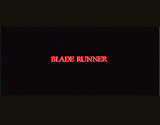


Blade Runner (1982), 117 minutes, D: Ridley Scott
Director Ridley Scott's moody futuristic, sci-fi noirish action-thriller featured stunning, visually-dazzling effects and a brooding atmosphere. It was based on the 1968 novel Do Androids Dream of Electric Sheep? by Philip K. Dick, and told about a hard-boiled detective hunting near-human "replicants." A second director's cut version was released in 1992 - it removed Deckard's voice-over narration, added a dream sequence (a unicorn reverie), and edited out the film's happy ending. A sequel followed: Blade Runner 2049 (2017). In a totalitarian, decaying 21st century Los Angeles (November, 2019), jaded, semi-retired, Philip Marlowe-style ex-cop Rick Deckard (Harrison Ford), known as a "blade runner," was forced out of retirement. He was hired by his old boss, Bryant (M. Emmet Walsh) to hunt down and eliminate (or 'retire') four synthetic "replicants" - genetically engineered super-humanoid robots built by the Tyrell Corporation and their designer Dr. Eldon Tyrell (Joe Turkel). The four highly-advanced Nexus 6 replicants included: 'pleasure model'-prostitute Pris (Daryl Hannah), the advanced, superhuman and highly intelligent leader Roy Batty (Rutger Hauer), trained assassin Zhora (Joanna Cassidy), and Leon Kowalski (Brion James). They had illegally come to Earth from an Off-world colony where they were used as slave laborers. With a built-in, shortened life span of only four years, the androids had mutinied and escaped in order to confront the individual who designed them, Dr. Tyrell. At the Tyrell Corp.'s headquarters, Deckard met Tyrell's personal assistant, beautiful Rachael (Sean Young), a typical femme fatale. Using Rachael as a test subject with a device known as a Voight-Kampff (VK) analyzer, Deckard tested her and discovered that she was a bio-engineered, replicant-android herself. She was a unique experimental Replicant who had been given implanted memories, and wasn't entirely aware of her true identity. (Deckard was conflicted about Rachael after learning that she was also to be eliminated, after he fell in love with her.) Deckard began eliminating the replicants one-by-one, first Zhora (who he found posing as an exotic dancer named Miss Salomé), and then Leon. Meanwhile, Pris (Roy's lover) was ingratiating herself with J.F. Sebastian (William Sanderson) - a dying inventor (who designed lifelike toys and dolls) and also functioned as a Tyrell Corporation genetic designer. Her manipulative goal was to get close to Tyrell and murder him. Roy was successful in infiltrating into Tyrell's penthouse home with Sebastian, and demanded that his "father" - or creator extend his short lifespan. When denied, the despondent Roy first kissed Tyrell, but then crushed his skull by poking his thumbs through Tyrell's eyes - and then killed Sebastian. Afterwards, Deckard confronted both Pris and Roy at Sebastian's place, and eliminated both of them. It was ironic that Deckard was saved from falling to his death from the rooftop, followed by Roy's very dramatic and moving death - he was saddened that with his impending premature death, all of his acquired memories would be lost "like tears in rain." As the film concluded, blade-runner Deckard realized the heroic struggle of the androids against an inhumane system - and he allowed Rachael to live - and learned that she had no termination date. [Note: There were numerous hints throughout the film that Deckard himself was a replicant.]

Diner (1982), 110 minutes, D: Barry Levinson
Writer/director Barry Levinson's influential period comedy film and character study of male friendship was a classic episodic rites-of-passage film set in the late 50s that centered around a Baltimore, Maryland diner, where six Jewish male buddies in their twenties hung out for six days between Christmas and New Years; the ensemble comedy's taglines expressed the film's theme: "What they wanted most wasn't on the menu" and "Suddenly, life was more than french fries, gravy, and girls." Many of the scenes in the film (over an extended Christmas holiday period in 1959) were held at the Fells Point Diner between a group of six post high-school graduate male friends - featuring their many fast-paced, late night, often mindless, guy-talk discussions (with overlapping dialogue, both scripted and improvisational). An approaching marriage for one member of the group brought the confused, struggling, chauvinistic group together at the diner for more eating and drinking, arguing, and talking about sex, sports trivia, the direction of their lives, and 45 rpm records. The six guys were introduced (in the order of their appearance): indebted compulsive gambler, aspiring law student at the Univ. of Baltimore and ladies man Robert "Boogie" Sheftell (Mickey Rourke) who worked days in a beauty parlor, irresponsible, troubled, rebellious, and often-drunken rich trust-fund kid and college drop-out Timothy "Fen" Fenwick, Jr. (Kevin Bacon), TV and appliances store clerk Laurence "Shrevie" Schreiber (Daniel Stern) who was unhappily-married to Beth (Ellen Barkin in her screen debut), annoying, rambling and wisecracking Modell (Paul Reiser) and about-to-be-married nervous fiancee Edward "Eddie" Simmons (Steve Guttenberg). The sixth member of their gang at the train station: Masters in Business graduate student William "Billy" Howard (Timothy Daly) who was on a holiday break; he arrived in town to attend Eddie's New Years Eve marriage to his off-screen fiancee Elyse (to serve as Best Man), and to hook up with his unmarried girlfriend Barbara Kohler (Kathryn Dowling) who worked in the local TV station. On a budget of $5 million, it made less than $15 million, and lost its sole Academy Award nomination (Best Original Screenplay).


E. T. - The Extra-Terrestrial (1982), 115 minutes, D: Steven Spielberg
Director Steven Spielberg's massively popular, widely appealing, feel-good sci-fi fantasy became a cultural phenomenon in the early 80s - and one of the most popular and highest-grossing movies of all time. Its story was about a kind-hearted, cute alien living with a suburban family, known as E.T. The harmless alien botanist from outer space had been left behind and stranded on Earth. The lovable extra-terrestrial was lured by Halloween candy (Reese's Pieces), befriended by a young boy (Henry Thomas), and protected from authoritarian adults and menacing scientists who wanted to dissect and study the creature. The curious alien eventually found his way back home, with aid from children, to his returning spaceship.
Fanny and Alexander (1982, Swe./Fr./W.Germ.) (aka Fanny Och Alexander), 188 minutes, D: Ingmar Bergman
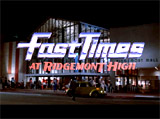

Fast Times at Ridgemont High (1982), 91 minutes, D: Amy Heckerling
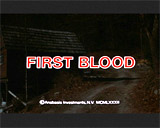

First Blood (1982) (aka Rambo: First Blood), 99 minutes, D: Ted Kotcheff


Fitzcarraldo (1982, W.Germ./Peru), 157 minutes, D: Werner Herzog
Werner Herzog's adventure/action film was a fascinating depiction of a crazed Irish dreamer's (Klaus Kinski) obsessed scheme to become a rubber entrepreneur in turn-of-the-century Peru. His quixotic plans included hauling a massive 320 ton steamship, christened SS Molly Aida, over a group of steep-inclined South American hills to another waterway. The persevering Brian Sweeney Fitzgerald (known as Fitzcarraldo) was convinced that a shipping lane through the Amazonian rainforest could facilitate access to a profitable area of 14 million rubber trees. A second mad idea of the determined opera music lover was to use his rubber fortune to finance an opera house in the middle of nowhere.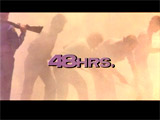




48 Hrs. (1982), 96 minutes, D: Walter Hill




Gandhi (1982, UK), 188 minutes, D: Richard Attenborough
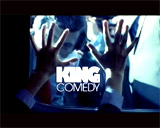

The King of Comedy (1982), 108 minutes, D: Martin Scorsese
Scorsese's original, under-appreciated dark comedy - a stark contrast to his own Taxi Driver (1976), was about the bizarre relationship between stardom, the cult of celebrity, and violence-prone wannabe obsessed fans. Scorsese and screenwriter Paul Zimmerman managed to pull off a story that was not only chilling and spooky, but geniunely funny, yet the film was so far ahead of its time that it flopped at the box-office upon release. It was similar to Elia Kazan's A Face in the Crowd (1957). The main character was a wimpy, aspiring stand-up comedian named Rupert Pupkin (Robert De Niro in his fourth film with Scorsese) - a man in his mid-30's who still lived with his mother (only heard off-screen). The untalented and self-deluded Rupert worshipped fame and was determined to become a celebrity. He was totally obsessed with late-night talk show host Jerry Langford (Jerry Lewis, playing the role absolutely straight in his best dramatic role ever), a Johnny Carson-esque character (the part was originally written for Johnny Carson), and stalked his 'love' object at his show. He brazenly appeared unannounced at Langford's country estate with an embarrassed date-friend Rita (Diahnne Abbott, De Niro's wife at the time). Later, with the help of an equally deranged, amorous fan and talk-show groupie Masha (Sandra Bernhard, who won Best Supporting Actress with the National Society of Film Critics), Rupert kidnapped Langford and demanded as ransom that he get to do the opening monologue one night on Langford's show, and be named the new "King of Comedy."

Koyaanisqatsi (1982), 87 minutes, D: Godfrey Reggio
The powerful, unconventional, experimental and provocative script-less, actor-less, and dialogue-less film (except for the chanting of Hopi prophecy at the end) was from director Godfrey Reggio - his first attempt at a feature-length narrative film. One of the title's meanings was: "A state of life that calls for another way of living." The Hopi Prophecies chanted in the film were translated in a final title card, warning: "If we dig precious things from the land, we will invite disaster." Considered both revolutionary and pretentious, this unique and hypnotic work with incredible, expert time-lapse photography was insightful about humankind and our relationship to nature, and explored the world in ways we usually never see due to our limited perceptions. The title was taken from a Hopi Indian word, meaning, among other things: "Life (a world) out of balance." This multimedia film, supported by both Francis Ford Coppola and George Lucas - a well-constructed sequence of music-laced scenes, illustrated the collision of the natural world with the hustle and bustle of urban, technological life and civilization. Koyaanisqatsi featured images and scenes that were truly haunting and lingering long after the film was over, like the empty shells of the Pruitt-Igoe housing in St. Louis, the alternating shots between satellite photos of human cities and the landscapes of micro-chip circuitry, and the final shot of a V2 rocket exploding, as the camera followed the free-fall of a charred chunk to the ground. Clouds over the Grand Canyon appeared as roiling waves of a white ocean, or as shadows over the sides of towering NYC skyscrapers, and city streets with streaks of brake lights from commuter's vehicles looked like blood vessels in the circulatory system. Philip Glass' stunningly creative, minimalist score played as large a part as the cinematography (by Ron Fricke), and beautifully complemented this artistic film. It was followed by two sequels in a Qatsi trilogy, of sorts: the equally powerful Powaqqatsi (1988) (life in transformation) focusing on Third World countries, and the lesser Naqoyqatsi (2003) (life as war).


Missing (1982), 122 minutes, D: Constantin Costa-Gavras
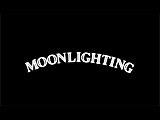

Moonlighting (1982, UK), 97 minutes, D: Jerzy Skolimowski
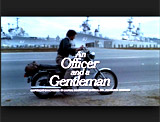

An Officer and a Gentleman (1982), 126 minutes, D: Taylor Hackford
Director Taylor Hackford's and Paramount's R-rated blockbuster (chick-flick) and crowd-pleasing romantic drama was about the training of a US Navy Aviation officer candidate, and his on-again/off-again romantic relationship with a local townie, one of the 'Puget Debs' - who worked at a paper factory and helped to reveal his inner "gentleman." Aloof, cynical, arrogant, cocky Navy cadet trainee Zack Mayo (Richard Gere) started his 13-week training at Aviation Officer Candidate School (AOCS) in Port Rainier, located on the Puget Sound in Washington state. In a flashback, during his childhood, Zack had been brought up unwanted by his boozing, hedonistic, military seaman father Byron Mayo (Robert Loggia) in the Philippines after his abandoned mother committed suicide. No-nonsense and tough drill Marine Gunnery Sgt. Emil Foley (Oscar-winning Louis Gossett, Jr.) confronted the new recruits with a series of insults as they lined up in front of him before their 13 week training program. The raw, tattooed, long-haired recruit Zack, with a chip on his shoulder, was singled out for special abusive treatment. At a sponsored officer's dance, a romance developed between Zack and headstrong, husky-voiced, Polish, local paper factory working girl Paula Pokrifki (Debra Winger), one of the local 'Puget Debs' or "townies" who dreamt of marrying a naval officer. Sgt. Foley punished Zack and reprimanded him for not being a team player - after discovering that he was running a contraband side business of selling shined shoes and belt buckles. During a weekend of punishment, Zack was encouraged by Foley to self-issue a DOR (Drop Out on Request) to be removed, but he refused ("I got nowhere else to go! I got nowhere else to g... I ain't got nothin' else. I got nothin' else"). Paula and Zack experienced an up-and-down relationship - she challenged him for not showing a commitment, and they became more deeply involved with an erotic, realistic and sexually explicit nude love scene. Zack's All-American boyish buddy from Oklahoma, Sid Worley (David Keith) had also established a romantic relationship with Paula's manipulative work friend Lynette Pomeroy (Lisa Blount), who was dropping hints that she was pregnant; impulsively, Sid decided to DOR from the naval aviation program after 11 weeks. He proceeded to Lynette's house to propose to her with an engagement ring, and suggested that they move back to Oklahoma. To his surprise, Lynette cruelly rejected his romantic invitation - she also told Sid that she wasn't pregnant and that their relationship was over because she really wanted to marry a naval aviator. Tragically, Zack discovered the dead body of Sid (in the nude in the Tides Inn Motel bathroom), where he had committed suicide by hanging after his failed relationship with Lynette. Zack was utterly frustrated with the death of Sid, and was tempted to also DOR from the base. A bruising, ball-busting unofficial martial-arts bout with Sgt. Foley ("Let's see what ya got") changed Zack's mind about requesting a DOR. In the rousing, overly-sentimental, slightly-cheesy tearjerking finale (a wish-fulfillment Cinderella conclusion), graduate-trainee Ensign Zack Mayo (in his neatly-pressed naval dress whites after being commissioned) came up to a surprised Paula at her factory workplace. He swooped her up into his arms with kisses, and carried her away to the exit, as her co-workers applauded - to the tune of the Oscar-winning "Up Where We Belong."
Poltergeist (1982), 114 minutes, D: Tobe Hooper
Director Tobe Hooper (who was better known for his cult horror classic The Texas Chainsaw Massacre (1974)) created this memorable supernatural horror film with co-producer/co-writer Steven Spielberg. This was Spielberg's first smash hit as a co-producer, paired with Frank Marshall (who later produced Who Framed Roger Rabbit? (1988)). It was released at the same time as another suburban tale with otherworldly visitors: E.T.: The Extra-Terrestrial (1982) and could also be interpreted as a threatening, scarier version of director Spielberg's pre-E.T. film: Close Encounters of the Third Kind (1977). Compared to both films, Poltergeist was the dark flip side of alien encounters. Its classic 'haunted house ghost story' was fascinating to watch, with extraordinary special effects created by George Lucas' Industrial Light and Magic team, from a screenplay by Spielberg, Michael Grais, and Mark Victor. The famous poster reflected one of the more memorable, spookier moments of the film, with young 5 year-old Carole Anne (Heather O'Rourke) pressed against a television showing nothing but white noise, telling everyone: "They're here." There were two, less successful sequels in subsequent years: Poltergeist II: The Other Side (1986) and Poltergeist III (1988). Many filmgoers were intrigued by the seemingly-tragic legacy of the film, with the unexpected deaths of star Dominique Dunne (in her last film role before her tragic murder by her live-in boyfriend) and O'Rourke (who died six years later just before the second sequel's release). In the basically-simple plot, two Southern California suburbanites: Diane and Steve Freeling (JoBeth Williams and Craig T. Nelson) were living in the newly-built Cuesta Verde housing development or subdivision, in their dream home. They had three children: teenaged older daughter Dana (Dominique Dunne), Robbie (Oliver Robins) and young Carol Anne (Heather O'Rourke). Many strange and extra-ordinary events began to occur - some of them threatening, including a blank TV screen, the death of a pet bird, unexplainable stacked kitchen table chairs and bending silverware, a gnarled backyard tree that came to life, and later, Robbie's terrorizing favorite clown doll. The 'ghostly' inhabitants of the house turned ominous when Carol Anne was kidnapped through a portal in her bedroom closet and taken into a different dimension. College parapsychologists: Dr. Lesh (Beatrice Straight), Ryan (Richard Lawson), and Marty (Martin Casella) were consulted and judged the phenomena as the result of a poltergeist. A spiritual medium named Tangina Barrons (Zelda Rubinstein) was also brought into the home to investigate. After Carol Anne (and Robbie) were rescued from the Beast, it was ascertained that the Cuesta Verde development was built on the location of a cemetery that had not been relocated as promised. (Coffins with skeletons were unearthed in the Freeling's muddy backyard during a rainstorm.) The film ended with the implosion of the Freeling house as it was taken into the portal, as the family escaped to a motel for the night.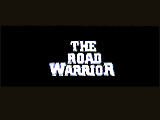

The Road Warrior (1982), 94 minutes, D: George Miller
See previous year's Mad Max 2 (1981, Aust.) for full description.
Although the Australian import was released worldwide in late 1981, US distributor Warner Bros. picked up the rights, but feared that US audiences wouldn't attend a sequel that they knew nothing about. So the studio changed the title to The Road Warrior and delayed its US debut until May of 1982.
Sophie's Choice (1982), 157 minutes, D: Alan J. Pakula
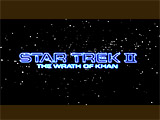


StarTrek II: The Wrath of Khan (1982), 116 minutes, D: Nicholas Meyer
Director Nicholas Meyer's sci-fi, dramatic action film was a superior sequel to the first installment (Star Trek: The Motion Picture (1979)). It has been widely regarded as one of the best, most-critically acclaimed entries in the entire series. This second film, plus the third and fourth films (Star Trek III: The Search for Spock (1984) and Star Trek IV: The Voyage Home (1986)) comprised a loose trilogy. The film was set in the 23rd century, when aging ex USS Enterprise commander Admiral James T. Kirk (William Shatner) - on one of his final missions, was forced to face-off against his old exiled nemesis - the genetically-engineered Khan Noonien Singh (Ricardo Montalban) from the late 20th century Earth. The vengeful tyrant Khan had escaped after 15 years in exile and was causing problems by taking over a Federation spaceship (the USS Reliant), raiding a Space Station (Regula I) and stealing its top secret, powerful terraforming device named Project Genesis. The film opened in the year 2285 during a training session at Starfleet Academy of cadets. Former USS Enterprise commander, recently-promoted Admiral James T. Kirk was involved with trainees who were being tested to be the commander of the starship USS Enterprise. Meanwhile, Russian-accented First Officer and commander Pavel Chekov (Walter Koenig) was on a mission on another Federation starship the USS Reliant, captained by Clark Terrell (Paul Winfield); their journey was to check out Ceti Alpha VI in connection with the Federation's top-secret Project Genesis; they were conducting a search for a lifeless planet to use as a test site for the Genesis Experiment and its Genesis Device, to rehabilitate dead and lifeless worlds. Chekov and Terrell were beamed down to the inhospitable, dry and sandy surface of Ceti Alpha VI to check for signs of life (they didn't know they had actually landed on Ceti Alpha V). They were confronted and captured by the film's main villain - genetically-engineered, bare-chested superhuman Khan Noonien Singh of the late 20th century. 15 years earlier, Kirk had exiled Khan to the planet of Ceti Alpha V, where the vengeful Khan became the leader of the marooned crew of survivors of the SS Botany Bay, who had survived within the derelict vessel; six months after Khan's exile there, the planet was transformed into a wasteland by an explosion on nearby Ceti Alpha VI that caused massive climate changes; the massive blast shifted its neighboring planet's orbit and its ecosystem - "everything was laid waste" and Ceti Alpha V became a "barren sand heap"; Khan blamed Kirk for the death of his beloved wife. Khan took complete command of the USS Reliant, communicated with scientist Dr. Carol Marcus (Bibi Besch) in the lab on the Space Station Regula I and forcefully demanded the Project Genesis materials from her. Dr. Marcus made plans with her Genesis Project personnel to vacate Regula I before the USS Reliant arrived. With Admiral Kirk in command of the USS Enterprise, he investigated the situation and was ambushed and fired upon (causing the deaths and injuries of some young cadets) by the USS Reliant. Both ships were damaged during a stalemated conflict. Kirk and other crew members transported themselves onto the Regula I space station, and found that most of Dr. Marcus' crewmembers were dead after being tortured by Khan. The original crew of the USS Reliant was marooned on Ceti Alpha V. Kirk and others proceeded from the space station onto the nearby Class D rocky planetoid of Regula below, where they found Dr. Marcus and her grown son David Marcus (Merritt Butrick) - Kirk's grown son from his previous marriage, hiding underground in a bunker. Meanwhile, Khan had been able to successfully acquire the Genesis torpedo device by teleporting it onboard his kidnapped starship - the USS Reliant. Kirk realized he was faced with his long-time, vengeful nemesis who predicted his demise on the planet after destroying the USS Enterprise. Kirk and his stranded crew were beamed back to the USS Enterprise, but still under the threat of Khan. Adm. Kirk decided that the only way for the crippled USS Enterprise (without proper defense capabilities and the lack of warp power) to face off fairly with Khan's captured USS Reliant was to move their major battle to the Mutara Nebula. The USS Enterprise was struck and badly incapacitated (it lost its main power and its warp drive chamber leaked radiation), while torpedo fire from the USS Enterprise maimed and mortally-wounded Khan. Before dying, the venomous Khan decided to blow up his own stolen USS Reliant spaceship with the Genesis machine and thereby also destroy the nearby USS Enterprise. To save the doomed Enterprise from the deadly explosion (and provide it with warp speed to escape), Vulcan Captain Spock (Leonard Nemoy) decided to sacrifice himself by sneaking away and entering the starship's highly-irradiated engine chamber to repair the Enterprise's main reactor. Within the warp chamber, Spock heroically and self-sacrificially exposed himself to radiation poisoning while repairing the reactor to bring the warp drives back on-line. After repairs, the USS Enterprise went into warp speed and escaped the blast when the Genesis torpedo exploded (destroying the Reliant and Khan). The film concluded with Spock's dramatic death scene. At his funeral on the torpedo deck, Kirk delivered a heartfelt eulogy for his intimate friend. Spock's death was balanced by the birth of a new planetoid from the Genesis explosion in the nebula, around which his burial-casket (in a torpedo casing) would orbit, to eventually land in the lush jungle.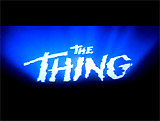



The Thing (1982) (aka John Carpenter's The Thing), 108 minutes, D: John Carpenter
Director John Carpenter's remake of Howard Hawks' 1951 classic sci-fi horror film told about an alien threat at a remote base, and about additional subsequent threats of personal estrangement, powerlessness, distrust and alienation. It was considered to be the first part of a so-called "Apocalypse Trilogy," followed by Prince of Darkness (1987) and In the Mouth of Madness (1995). Carpenter's R-rated, dark and nihilistic cult film was a mostly faithful, bleak and moody return to the original 1938 source (by scriptwriter Bill Lancaster), with clear homage to the original 1951 film and to Ridley Scott's Alien (1979). In this remake 31 years later, the setting was in 1982 at a remote Antarctica base (US Station 4, Outpost 31) at the South Pole amongst a twelve-man US expeditionary crew of socially-isolated outcasts who would soon be experiencing sub-zero temperatures and extreme paranoia. Both films explored how an extra-terrestrial alien life-form entity (frozen in ice and thawed) threatened US researchers. Carpenter's film tagline warned: "Man is the warmest place to hide." As the film opened, a Norwegian (Norge) helicopter was seen tracking down and firing at a Husky sled dog for no apparent reason. When it landed near the US National Science Institute base camp, the American researchers and scientists watched as the helicopter accidentally blew up with a grenade (killing the pilot) and the crazed passenger-gunman was shot down in self-defense by the base's lead commander Garry (Donald Moffat). It was hypothesized that the two dead Norwegians must have been suffering from "cabin fever" and had become crazed as they hunted down the Husky dog. Two other US crewmembers, the loner-hero R.J. MacReady (Kurt Russell) and Dr. Copper (Richard Dysart) navigated to the nearby Norwegian base (an hour's flight away), where they found burning buildings and two frozen corpses (one horribly deformed and the other a possible suicide). The remains were brought back for an autopsy, but nothing was found to be abnormal internally. After the Norwegians' Husky sled dog with placed in the kennel with the US station's other sled dogs, the dog's head split open and was metamorphosized into a scary-looking, flesh-eating creature sprouting twine-like tentacles and crab's legs before spraying some of the other dogs with slime and consuming them - the Dog-Creature was eliminated with a flamethrower. Senior biologist Blair (A. Wilford Brimley) performed another autopsy on the Dog-Creature and concluded that it was a shape-shifting alien "Thing" - a chameleon that could perfectly assimilate, digest (or dissolve) and re-form itself into the shape of its victims (animal or human) by imitating its image or identity. US crew members also visited the Norwegians' remote dig site (the location of a UFO crash about 5-6 miles NE from their base), and found a partially buried alien spacecraft that had possibly crash-landed 100,000 years earlier, and a separate closeby site with a large rectangular block out of the ice that had since been hollowed out. MacReady thought outloud about how an alien-Thing Creature had emerged from the alien craft, but had presumably frozen to death in the ice. Then, the alien-Thing Creature was dug out of the ice and brought back to the Norwegian camp, where it thawed out and attacked the researchers. With more study, Blair described how cellular activity in the Husky dog's remains was still present and alive; he fearfully worried (with increasing paranoia) that if the virulent alien-Thing ever escaped to civilized areas, it would quickly assimilate all of life on Earth in only a few years; Blair estimated that the entire world could be infected in only 27,000 hours (about 3 years). As described in Blair's notes as he feared for everyone's lives, the THING "wants life-forms on Earth....it needs to be alone and in close proximity with the life-form to be absorbed. The chameleon strikes in the dark....There is still cellular activity in these burned remains. They're not dead yet!" For the remainder of the film, the US crew members became fearful and distrustful of each other in the isolated and threatened camp, summarized by MacReady: "Somebody in this camp ain't what he appears to be. Right now that may be one or two of us. By spring, it could be all of us." The THING continued to replicate and assimilate itself, causing panic and a race to survive and detect who was the next alien threat - not knowing who was still human, and who was infected. In the film's tensest sequence, MacReady forced everyone to participate in a blood serum test to determine who had alien blood. By the end of the film, the only way to eradicate the alien-Thing was to completely destroy the camp with explosives. The only two remaining survivors, MacReady and Childs (Keith David), sat amidst the burning debris, wary of each other and facing a dire fate under the circumstances (MacReady's last line of dialogue: "Why don't we just wait here for a little while, see what happens?")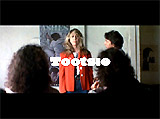

Tootsie (1982), 116 minutes, D: Sydney Pollack
Actor/director Sydney Pollack's modern-day, appealing classic Hollywood romantic comedy featured witty dialogue in its story about a NYC actor who was forced to cross-dress to find employment. [Note: Star Dustin Hoffman successfully prepared for the role by dressing in drag and convincingly fooling others, and he welcomed the chance to lampoon his own acting reputation as "difficult."] Desperate out-of-work, contentious, stubborn stage actor Michael Dorsey (Dustin Hoffman), often considered temperamental, troublesome and sexist by his exasperated agent George Fields (director Pollack), could only find part-time jobs (waiting tables in a restaurant). His roommate was his best friend Jeff Slater (Bill Murray), an eccentric playwright, who also had money problems. After his insecure and neurotic girlfriend Sandy Lester (Teri Garr) was rejected for a role in the daytime TV soap opera Southwest General (a parody of General Hospital), Michael tried out by disguising himself as his own cross-dressing alter-ego named 'Dorothy Michaels' - a middle-aged feminist with padding. He won the part of Emily Kimberley - a no-nonsense, spunky, hospital administrator. He had to work with the detestable sexist director Ron Carlisle (Dabney Coleman) and producer Rita Marshall (Doris Beack). By winning the role, he had accomplished his goal of proving both George and Jeff wrong about his abilities - and was also raising funds of $8,000 to help finance Jeff's latest play (that would provide lead roles for Michael and Sandy). Soon, his role made the show a tremendous hit, but his life became even more complicated. While pursued by lecherous, long-time aging lead actor John Van Horn (George Gaynes) who was playing the part of Dr. Brewster, the disguised Michael became close to sweet fellow co-star actress Julie Nichols (Jessica Lange) who was playing a nurse - Ron's mistreated girlfriend, and soon secretly fell in love with her. Meanwhile, Julie's interested widowed father Les (Charles Durning) also fell for her-him. It was a difficult balancing act for Michael to show his affection for Julie as her confidante (without divulging his true identity as a man or being interpreted as a lesbian), and without ruining his friendship with Sandy. In the film's classic reveal sequence on the live TV show, Dorothy ad-libbed as she surprised everyone by removing her wig and wove a story about how she was actually Edward, Emily's twin brother who took her place to avenge her. In the film's conclusion, Julie slowly came around to forgive Michael (who had deceived her), and told him that she was really missing Dorothy's company. Michael confessed to Julie about the lesson he had learned: "I was a better man with you, as a woman, than I ever was with a woman, as a man."

The Verdict (1982), 129 minutes, D: Sidney Lumet
Alcoholic, ambulance-chasing, personal injury lawyer Frank Galvin (Paul Newman) in Boston, disgraced (when framed for jury tampering) and with a reputation for losing, was forced to acquire business by attending funeral services and handing out business cards to bereaved family membres. Then, his friend and semi-retired mentor Mickey Morrissey (Jack Warden) referred him to a devastating hospital case - that would soon produce a medical malpractice lawsuit. A pregnant woman became comatose and was left in a vegetative state following delivery at a Boston Archdiocese hospital. In the most promising case of his career and to atone for his drunken past, Galvin (while struggling to stay sober) was challenged to prove that Dr. Towler (Wesley Addy) had administered the wrong anesthesia. It was assumed that the family (and defense) would accept a huge settlement of $210,000 from the hospital's head Bishop Brophy (Edward Binns), or from slick defense attorney Ed Concannon (James Mason). But Galvin, in a stunning reversal, refused to settle out of court and set about to take the case for the plaintiffs, in the presence of presiding Judge Hoyle (Milo O'Shea). During the trial, Galvin was immediately confronted by sneaky tactics from Concannon's law firm: unscrupulous methods that removed a key medical witness, the undermining of a substitute witness' testimony, the planting of fellow bar-patron Laura Fischer (Charlotte Rampling) from the competing law firm as his love-making partner - in order to betray him, and cronyism with Judge Hoyle. Dr. Towler testified that he had done nothing improper or negligent, and had administered the proper drug for a patient that reportedly hadn't eaten for nine hours. Then, Galvin called a surprise witness, nurse Kaitlin Costello (Lindsay Crouse), to testify that Towler had ordered her to change the admitting records about the time interval from "1 hour" to "9 hours" - after he had made a fatal error by using the wrong anesthesia. She revealed a photocopy of the original admitting room form, showing the number "1" to the stunned court. Concannon conspired with the Judge to declare the nurse's testimony as inadmissable. In the conclusion, Galvin presented a subdued but convincing closing summation-argument to the courtroom jury: "So much of the time, we're just lost. We say, 'Please, God, tell us what is right. Tell us what is true.' I mean there is no justice. The rich win. The poor are powerless. We become tired of hearing people lie. And after a time we become dead, a little dead. We think of ourselves as victims, and we become victims. We become, we become weak. We doubt ourselves. We doubt our beliefs. We doubt our institutions, and we doubt the law. But today, you are the law. You are the law, not some book, not the lawyers, not a marble statue, or the trappings of the court. See, those are just symbols of our desire to be just. They are, they are, in fact, a prayer, I mean a fervent and a frightened prayer. In my religion, they say, 'Act as if you had faith. Faith will be given to you.' If-if we are to have faith in justice, we need only to believe in ourselves and act with justice. See, I believe there is justice in our hearts." The jury returned their decision in favor of Galvin's clients (the plaintiffs), thereby disregarding the judge's instructions to ignore the nurse's testimony. The jury foreman was told that they could legally award a greater amount than originally asked for.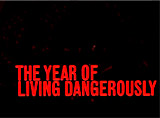




The Year of Living Dangerously (1982, Australia/US), 115 minutes, D: Peter Weir
Director Peter Weir's tale of political upheaval, divergent cultures, loyalty, betrayal, ambition, and morality was embedded in a love story. The first overseas assignment of shallow yet ambitious Australian journalist Guy Hamilton (Mel Gibson) was in Indonesia in 1965. Hamilton was 'adopted' by dwarfish Eurasian photographer Billy Kwan (Oscar-winning, cross-gendered Linda Hunt) and introduced to British consular official Jill Bryant (Sigourney Weaver) with whom he promptly fell in love. She gave him secret information regarding an arms shipment to the Communists so that they could escape the predicted war together, but Hamilton unwisely used the information for an exclusive story and put their lives in severe jeopardy.